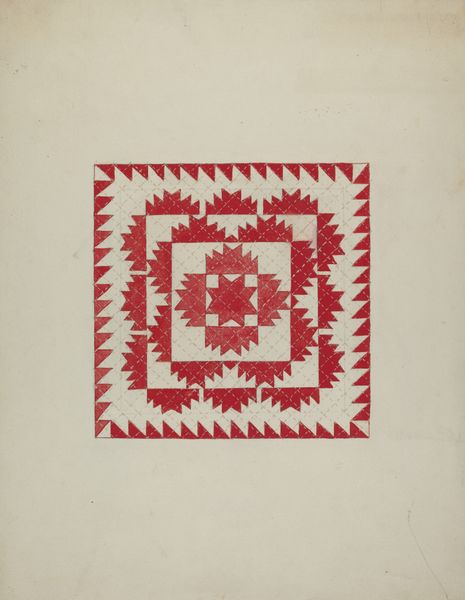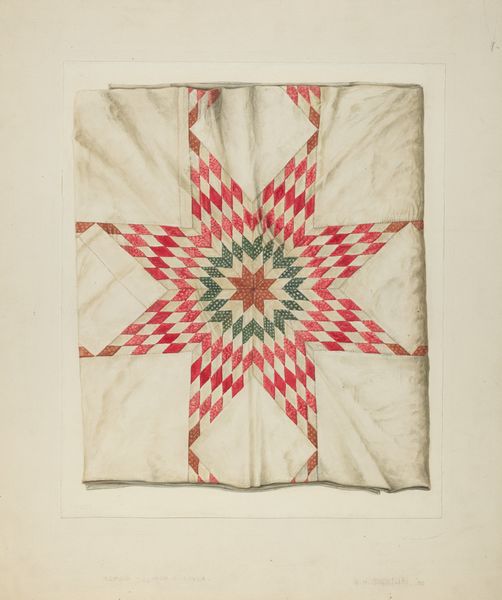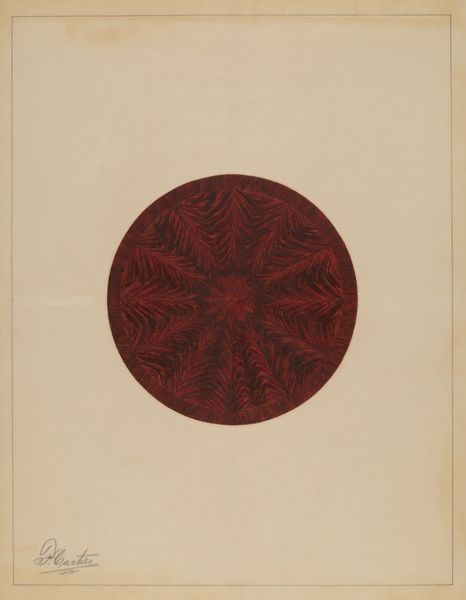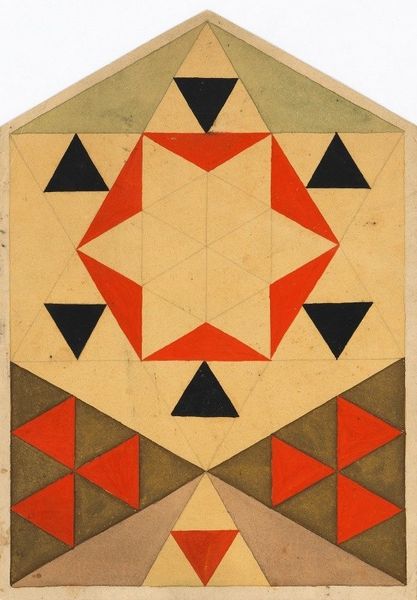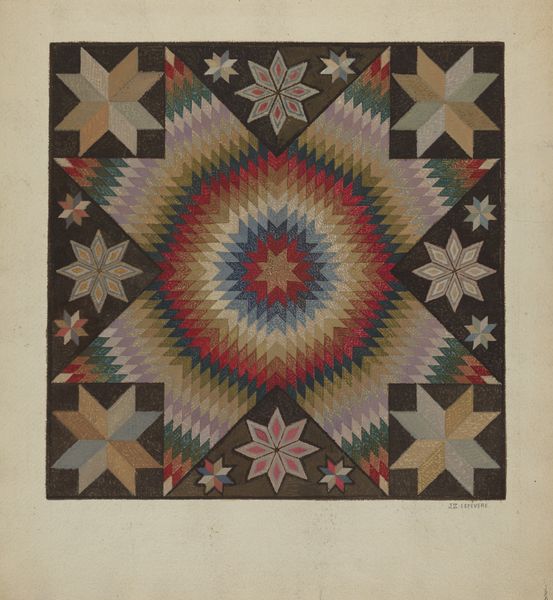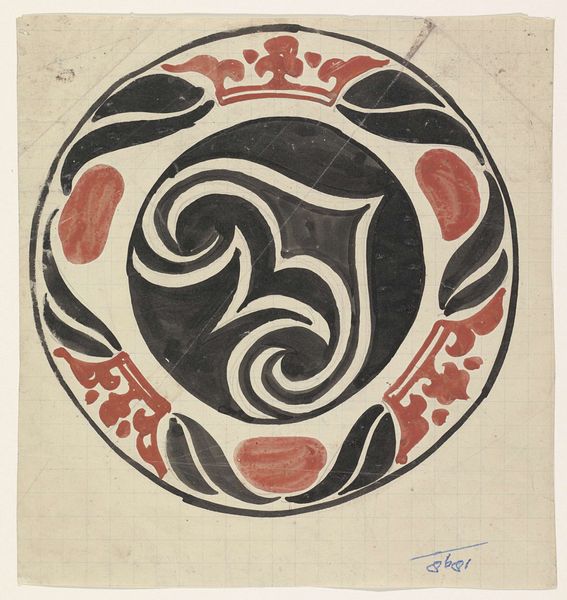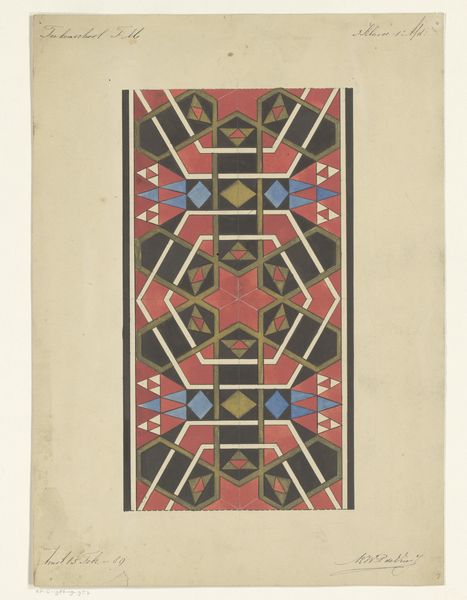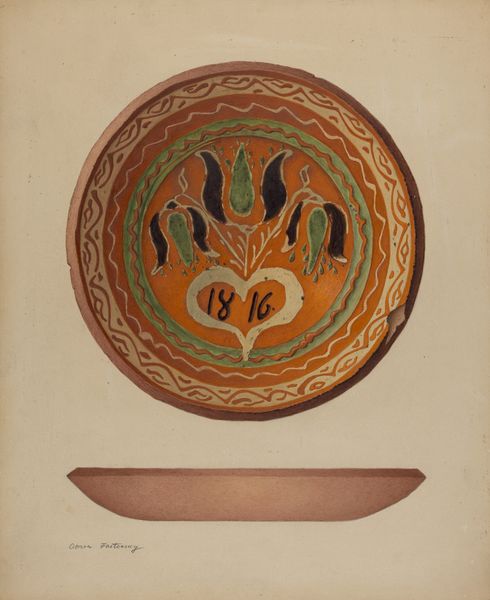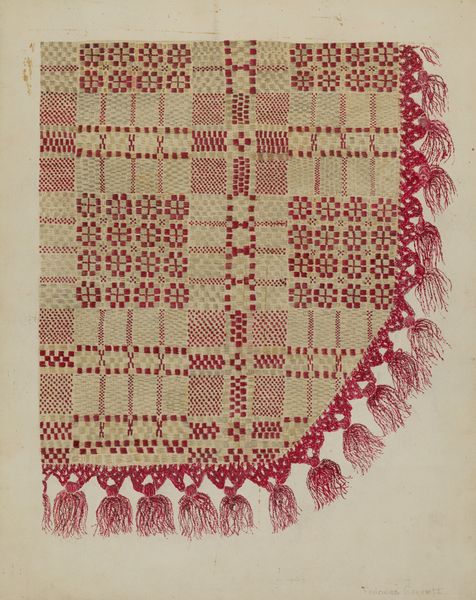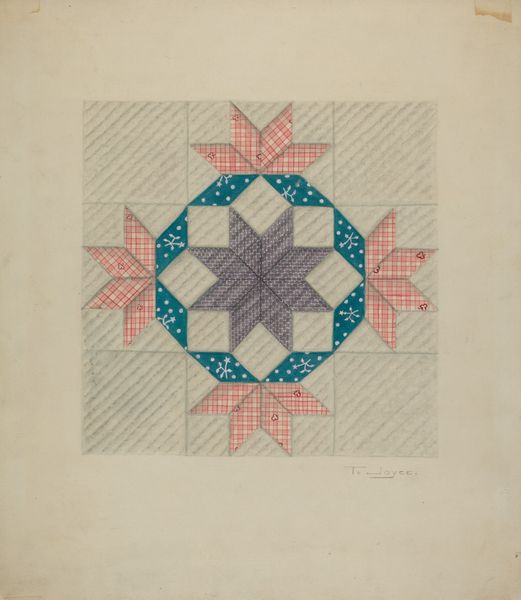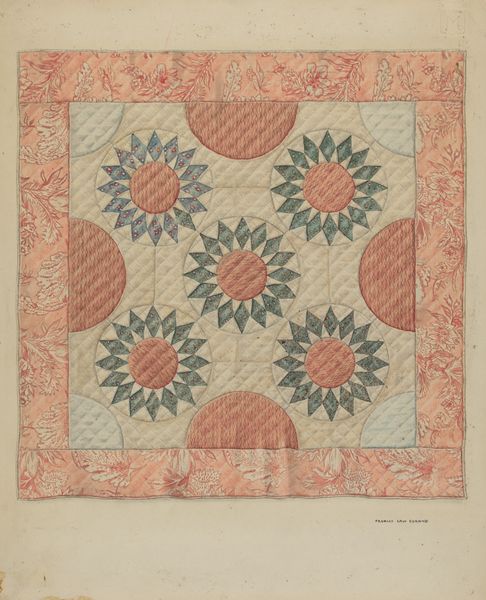
Dimensions: image (diameter): 41.7 cm (16 7/16 in.) sheet: 49.7 x 47.3 cm (19 9/16 x 18 5/8 in.)
Copyright: National Gallery of Art: CC0 1.0
Curator: Good morning. Today we are examining "Circle Limit II" by M.C. Escher, created in 1959. It's a woodcut print, immediately striking in its complexity. Editor: Absolutely, I find it a bit dizzying actually. The composition, a whirl of figures in relentless radial symmetry. Curator: Let's dive in. Observe how Escher employs tessellation, fitting repeating motifs into a circular space with diminishing scale toward the edges. This work serves as an elegant exploration of hyperbolic geometry. The fish figures… what do they signify for you? Editor: The cultural associations immediately come to mind, particularly their symbolic meaning to Christian beliefs. However, there's an inherent paradox in rendering them smaller toward the boundary, symbolizing exclusion or even marginalization. How might you, as a formalist, interpret this reduction in scale? Curator: Semiotically speaking, the diminution towards the periphery is a structural necessity—a visual element used by the artist to express the inherent principles of hyperbolic space rather than carrying literal sociopolitical commentary. The beauty resides in the mirroring effect, the constant rotation of shapes, color palette, and visual equilibrium. Editor: Fair enough. But to understand Escher, shouldn't we look at his historical influences, maybe at Islamic geometric patterns in architecture? These designs served diverse cultural needs across public and private spheres. Escher may have appreciated their aesthetic beauty without adopting their cultural significance, leading him to replicate mathematical formulas into secular, popularized artworks. Curator: An informed observation! Yet even detached from symbolic weight, consider the genius of Escher’s technique. The sharp, precise lines that define each figure create the mesmerizing effect of infinity within finite space. We should ask: Can a form purely represent something without inadvertently invoking external contextual understanding? Editor: Perhaps it is unavoidable; that is, as viewers, our individual cultural background shapes our perceptions of art—regardless of intentions from the creator or even theoretical frameworks provided by an art critic. This raises further interesting insights for understanding visual communication’s implicit function and responsibility. Curator: Interesting perspective. I find myself admiring Escher’s relentless precision, an ode to rationality. Editor: And I appreciate seeing how artwork operates within ever evolving society. Well, thank you for your wonderful insights. Curator: And thank you, that was extremely informative.
Comments
No comments
Be the first to comment and join the conversation on the ultimate creative platform.
